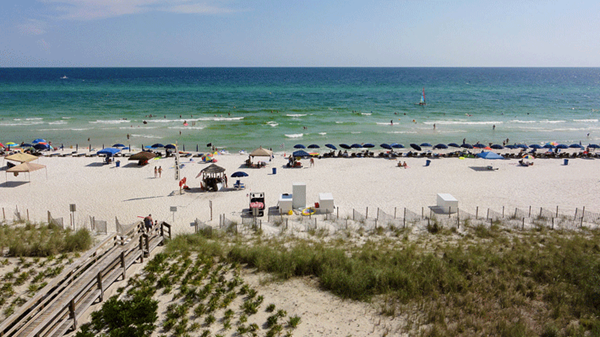Flesh-Eating Bacteria at Florida Beaches: How You Can Stay Safe
When temperatures hit 90 degrees or more, many of us hit the beach to cool off.
But health officials are warning Florida residents to be more careful after several confirmed cases of flesh-eating bacteria at beaches throughout the state.
So far this year there have been nine cases of Vibrio vulnificus, a rare flesh-eating bacteria that lives in warm saltwater. Brevard, Duval, Marion, Pasco, Santa Rosa and St. Lucie counties all have had confirmed cases and two people in Florida have died from the bacteria.
You can get vibrio vulnificus, which is in the same family as a group of bacteria that causes cholera, if you eat or touch raw shellfish that has been infected with the bacteria or if you swim in warm saltwater where the bacteria is present.
Going to the beach is a popular pastime here in sunny Central Florida, but we could see more cases of this bacteria this summer, especially as temperatures continue to warm. Vibrio vulnificus is rare—there were only 32 cases in Florida last year—but you still should take extra precautions if your family plans to visit the beach.
First, don’t get in the water if you have an open wound. This can put you at greater risk for infection if the bacteria gets into the wound. If you have a compromised immune system or have chronic liver or kidney disease, wear covered water or beach shoes to protect your feet from cuts and scrapes caused by shells or rocks. People with compromised immune systems are much more likely to contract this flesh-eating bacteria. One study showed that those with pre-existing medical conditions were 80 times more likely than healthy people to develop an infection of Vibrio vulnificus in their bloodstream.
You can further reduce your risk of vibrio vulnificus by:
- Thoroughly cooking shellfish, especially clams, mussels and oysters.
- Avoiding raw shellfish or limiting consumption to colder months.
- Wearing protective gloves when you handle raw shellfish.
- If you plan to eat oysters or any other shellfish, boil them until the shells open and continue boiling them for five more minutes. You also can steam them until the shells open and cook them for about 10 more minutes afterward.
If you recently swam in saltwater or ate raw shellfish and have an upset stomach, diarrhea, fever, skin lesions or blisters, visit a doctor as soon as possible. Fifty percent of vibrio vulnificus cases are fatal, so it’s critical to get medical attention right away. Once you are in the care of a healthcare provider or team, they will monitor the wound site and treat you with antibiotics to manage your symptoms. We also may remove infected tissue. This is an effective treatment option, especially in very severe cases where amputating the infected limb may be a possibility.
Flesh-eating bacteria is extremely rare, but as your family visits the beach this summer please keep the precautions I mentioned in mind. Shellfish is a popular delicacy in this area, but if you plan to host a summer clambake or barbecue or visit a local restaurant, opt for steamed, cooked or fried shellfish rather than raw. Taking all these safety measures will minimize your family’s risk of vibrio vulnificus, so that everyone has a safe, healthy and happy summer.








